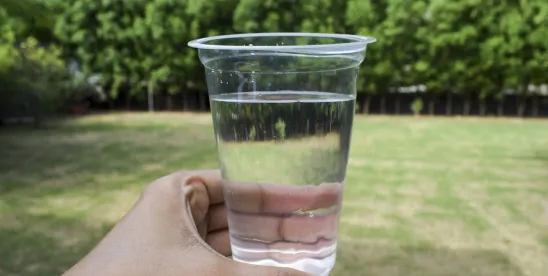On April 10, 2024, the Environmental Protection Agency (“EPA”) finalized the National Primary Drinking Water Regulation (“NPDWR”) for six per- and polyfluoroalkyl substances (“PFAS”). PFAS, also known as “forever chemicals,” are widely used in industry and consumer products. According to the EPA, these chemicals have been linked to serious adverse health effects, including cancer and other serious illnesses. The final rule establishes national standards for specific PFAS, both individually and as mixtures, often found in drinking water. [i]
The Final Rule
The final rule sets individual enforceable Maximum Contaminant Level (“MCL”) limits for five PFAS.[ii] MCLs are the highest levels of a contaminant that are allowed in drinking water. For mixtures containing two or more of four PFAS,[iii] the rule sets a Hazard Index Level. Finally, the rule also sets a Maximum Contaminant Level Goal (“MCLG”) for each individual PFAS and mixtures, which is a non-enforceable health goal set at a level below which there is no known or expected risk to health.
The EPA’s table below shows the new MCLGs and MCLs per chemical:

Compliance and Impact
Compliance with the rule will require initial and ongoing monitoring, notification to the public of any violations, and implementation of the final rule.[iv] By 2027, public water systems must complete initial monitoring for these chemicals. Starting in 2027, public water systems must continue ongoing monitoring, include their results in their Consumer Confidence Reports, and notify the public of any violations in either testing or monitoring. If testing reveals MCLs that exceed regulatory standards, water systems will have until 2029 to implement solutions to reduce any PFAS in their drinking water. Finally, starting in 2029, public water systems must comply with the final rule’s PFAS MLCs and notify the public of any violations.
Community Water Systems (“CWS”) and Non-Transient Non-Community Water Systems (“NTNCWS”) must comply with this rule. Further, this rule is only one step in the EPA’s efforts and Strategic Roadmap to reducing PFAS.[v] For instance, the EPA’s current study on industrial discharges of PFAS into Publicly Owned Treatment Works (“POTW”) aims to identify potential sources of PFAS into POTW influent, effluent, and sewage sludge in order to guide future regulations.[vi] The EPA estimates that compliance with the final rule will cost approximately $1.5 billion per year, although federal funding will be available to help communities impacted by PFAS in their drinking water.
Conclusion
Once the final rule becomes effective, public water systems must begin taking steps to comply with the final rule’s initial reporting requirements. While POTWs and industries are not subject to this rule, they might still be impacted. POTWs may need to evaluate their treatment processes and management strategies in response to the new PFAS MCLs rules and future EPA regulations of PFAS in wastewater.[vii] Industries may also be impacted to the extent that their facilities discharge PFAS since, under certain circumstances, the EPA seeks to hold PFAS polluters accountable.[viii] While the legal landscape is still developing, water providers and municipalities have already begun filing lawsuits against PFAS manufacturers and dischargers for contamination.[ix] Given the expected costs of compliance with the final rule, such industries may face further legal action related to the costs of compliance with the final rule or be held liable for cleanup costs. The final rule will become effective 60 days after it is published in the Federal Register.
[i] PFAS National Primary Drinking Water Regulation: FACT SHEET, EPA.gov, epa.gov/system/files/documents/2024-04/pfas-npdwr_fact-sheet_general_4.9.24v1.pdf (last visited April 12, 2024).
[ii] The five PFAS with individual MCL limits are PFOA, PFOS, PFNA, PFHxS, and HFPO-DA.
[iii] The four PFAS subject to Hazard Index levels as mixtures are: PFNA, PFHxS, HFPO-DA, and PFBS.
[iv] EPA’s Final PFAS National Primary Drinking Water Regulation: Monitoring and Reporting: FACT SHEET, EPA.gov, epa.gov/system/files/documents/2024-04/pfas-npdwr_fact-sheet_monitoring_4.8.24_0.pdf (last visited April 12, 2024).
[v] PFAS Strategic Roadmap: EPA’s Commitments to Action 2021-2024, EPA.gov, epa.gov/system/files/documents/2021-10/pfas-roadmap_final-508.pdf, (last visited April 12, 2024).
[vi] Study of PFAS Influent to POTWs, EPA.gov, (last updated March 29, 2024), epa.gov/eg/study-pfas-influent-potws.
[vii] EPA’s Commitments to Action 2021-2024, supra note 5.
[viii] Id.
[ix] Jeffrey Klueger, “‘Forever Chemical’ Lawsuits Could Ultimately Eclipse the Big Tobacco Settlement,” Time, (July 12, 2023), time.com/6292482/legal-liability-pfas-chemicals-lawsuit.



 />i
/>i

